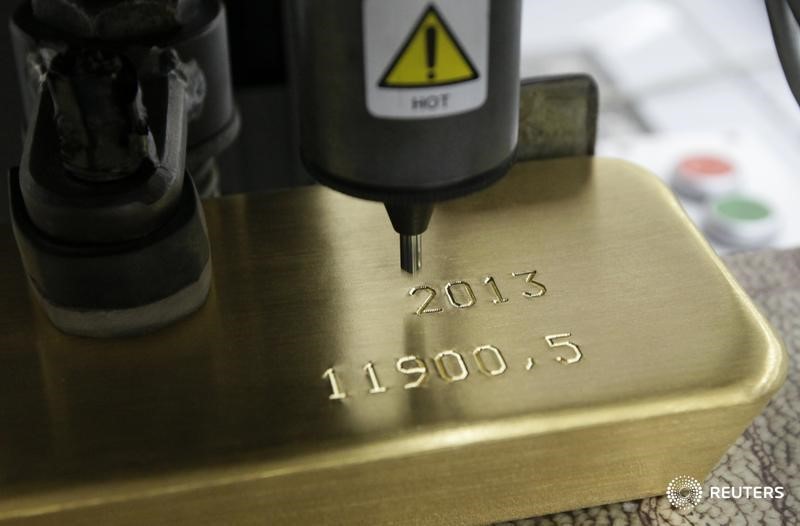Investing.com– Gold prices fell slightly in Asian trade, but kept recent record highs in sight as markets awaited more cues on U.S. interest rates from upcoming producer price index and retail sales data.
Among industrial metals, copper prices also retreated in Asian trade, but remained closed to 11-month highs after reports of production cuts by Chinese smelters pointed to tighter markets.
Broader metal markets were pressured by some resilience in the before the economic data.
Gold prices hover below record highs with more rate cues on tap
fell 0.2% to $2,171.06 an ounce, while expiring in April fell 0.3% to $2,175.35 an ounce by 01:27 ET (05:27 GMT).
Bullion prices had surged to record highs of around $2,200 an ounce at the beginning of the week, but saw swift consolidation after hotter-than-expected data put fears of high interest rates back into markets.
The strong CPI reading saw focus turn squarely towards upcoming readings on inflation and , due later on Thursday. The two are widely expected to factor into the Federal Reserve’s outlook on interest rates.
The data prints also come before a next week, where the central bank is widely expected to keep rates steady and signal no immediate plans to begin loosening policy.
A slew of Fed officials had warned that interest rate cuts will be largely dictated by the path of inflation in the coming months.
Other precious metals consolidated before the upcoming data. fell 0.4% to $942.45 an ounce, while steadied at $25.170 an ounce.
Copper prices cool at 11-mth highs after China-fueled rally
U.S. expiring in May fell 0.5% to $4.0382 a pound, after surging to 11-month highs on Wednesday, while three-month LME fell 0.5% to $8,884 a metric ton from a nine-month peak.
The red metal was boosted chiefly by media reports that China’s biggest copper smelters had jointly agreed to reduce production, although the scope of the planned cuts remained unclear.
Doubts also persisted over whether copper prices could maintain their melt-up, especially as the economic outlook for China, the world’s largest copper importer, remained dour.
Read the full article here
